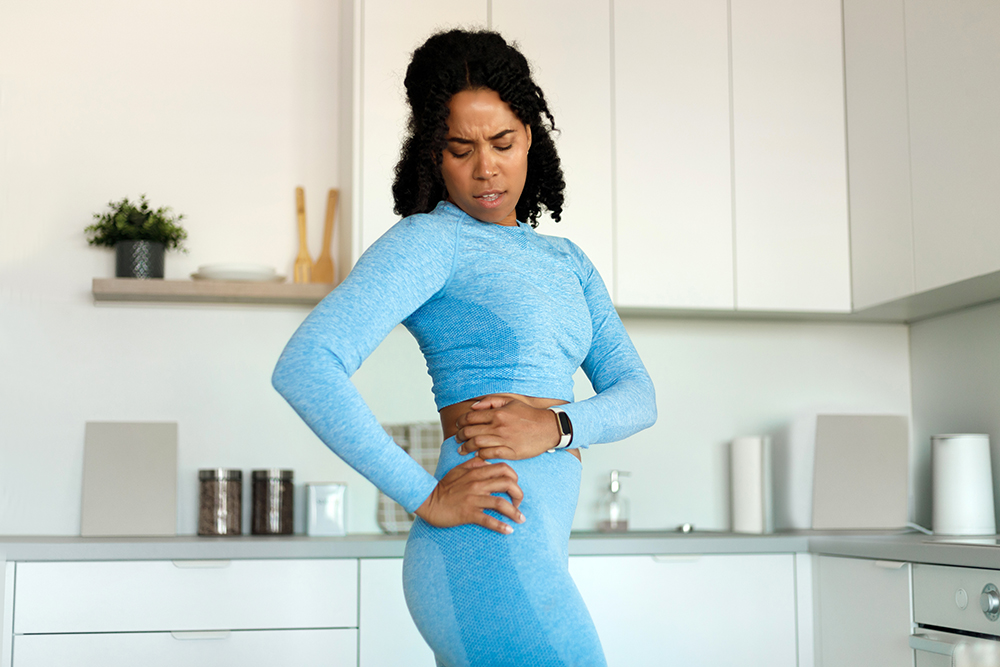Contents
You likely don’t give much thought to how your hips work on a day-to-day basis. Your hip is a joint that provides support for your body as you move, helps you move your legs and provides balance as you walk. There are groups of muscles that play a role in your hip function, called hip flexors.
Hip flexors are located in the upper thigh and consist of five muscles that help you move your leg as well as lift your knee. It’s important that they stay strong to reduce the risk of hip pain, reduced mobility and sustaining an injury from a fall.
Increasing strength is a common goal for many people who seek physical therapy, whether they’re healing from an injury, dealing with chronic pain or trying to work toward specific fitness goals. When it comes to hip flexors, there are a variety of physical therapy exercises that can boost their strength for better function and mobility.
Read on to learn physical therapy exercises that can help increase hip flexor strength, as well as a few that you should avoid. Then we’ll dive into how exercises play a role in our treatment for hip issues at Lattimore Physical Therapy.
6 exercises used in physical therapy to increase hip flexor strength
There are a variety of strengthening exercises for hip flexors that a physical therapist can recommend. It’s important to be guided through exercises by a physical therapist before you perform them on your own because you want to make sure you’re completing them safely and correctly for the best results. Some of these exercises may require additional equipment, such as an exercise band.
Here are six physical therapy exercises that are key to building strength around the hip flexors:
- Banded hip march — Stand with your feet hip width apart. Wrap a resistance band around your ankles. Bend your right knee up as high as you can while keeping your left leg straight. Hold it up for a second before lowering your foot back down to the floor. Switch to lifting the left knee. Repeat as often as directed by your physical therapist. This exercise can also be done from a lying position.
- Clamshells — Lie on your side with your knees bent and stacked on top of each other. You can use your arm or a pillow as a cushion for your head. Lift your top knee to engage your hip muscles while keeping your back straight. Hold it for one second before lowering your knee down to the starting position. Repeat as directed by your physical therapist before switching to the opposite side.
- Mountain climbers — Go down to the floor in a pushup position, with your hands and toes flat. Lift your right knee up toward your chest before bringing it back to the starting position. Switch to the left leg. Repeat as directed by your physical therapist. Be sure to keep your core tight while keeping your upper body as still as possible during the movement.
- Walking lunges — Stand with your feet together and your hands on your hips. Take a large step with your right leg, and bend at the knee. Both of your knees should be bent at 90 degrees. Be sure to keep your chest up and back straight during the movement. Stand up by pressing through your right foot, moving your body forward until your feet are back together in a standing position. Switch to the left leg with the next step. Repeat up to 30 times as directed by your physical therapist.
- Glute bridges — Lie on your back with your feet planted on the floor so that your knees are pointing to the ceiling. Place your arms at your sides or cross them over your chest. Lift your hips off the floor by tightening your core and glute muscles. Once your hips are aligned with your shoulders and knees, hold the position for up to two seconds; then lower back down to the starting position. Repeat as directed by your physical therapist.
- Straight-leg raises — Lie on your back. Bend your right knee so that your foot is planted flat on the floor. The left leg should be extended, and your arms should be at your sides. Lift your left leg straight up into the air by engaging your abdominal muscles while keeping your hips on the floor. Once the raised thigh is aligned with your bent knee, lower it back down to the resting position. Repeat as directed by your physical therapist for both legs.
Hip flexor exercises that you should avoid
Many people turn to exercises for targeted areas, such as the hip flexors, once they start to feel pain and stiffness that are interfering with their everyday activities. If you have sustained an injury or been diagnosed with a medical condition, or if you’re recovering from a surgical procedure, it’s important that you only perform exercises that don’t put excessive strain on the hip flexor muscles.
Your physical therapist will guide you through safe hip flexor exercises, as well as let you know which ones to avoid performing to reduce the risk of furthering the issues. Here are a few hip flexor strengthening exercises you should avoid if you’re already experiencing strain on the muscles:
- Deep squats — While mini squats may be beneficial for the intended muscles, deep squats can put too much stress on the hip flexors. A deep squat means that your hips reach below your knees.
- Leg presses — Some leg machines at the gym, such as the leg press, can put too much strain on the hip flexor muscles. The leg press can compress the joint, leading to pain and stiffness.
- High-impact activities — There are a variety of exercises that can put too much strain on the hip flexor muscles due to the impact they put on your lower extremities. High-impact activities can include jumping, running or intense sports.
- Burpees — This exercise involves a jump, squat and pushup in quick succession. Burpees can put a strain on your hip flexors or overuse the muscles, potentially leading to pain and reduced mobility.
Lattimore Physical Therapy can guide you through exercises for your hip flexors
When you’re having issues with your hip flexors, it can make every step uncomfortable. While it can be tempting to simply lie down until the symptoms go away, it’s not realistic to stop your everyday activities due to hip pain or stiffness. The good news is that strengthening your hip flexors can make a significant difference in the function and mobility of these muscles.
At Lattimore Physical Therapy, we’ll do an assessment of your hip flexor strength, flexibility and range of motion. We’ll also carry out an evaluation of your gait, balance and posture that may be affected by the muscles. Your physical therapist will design a personalized treatment plan to address your issues and goals, including the right hip flexor exercises. Other techniques that may help hip pain and range of motion include manual therapy and modalities.
Contact our team today for more information or to schedule an initial appointment to learn safe and effective hip flexor physical therapy exercises.



